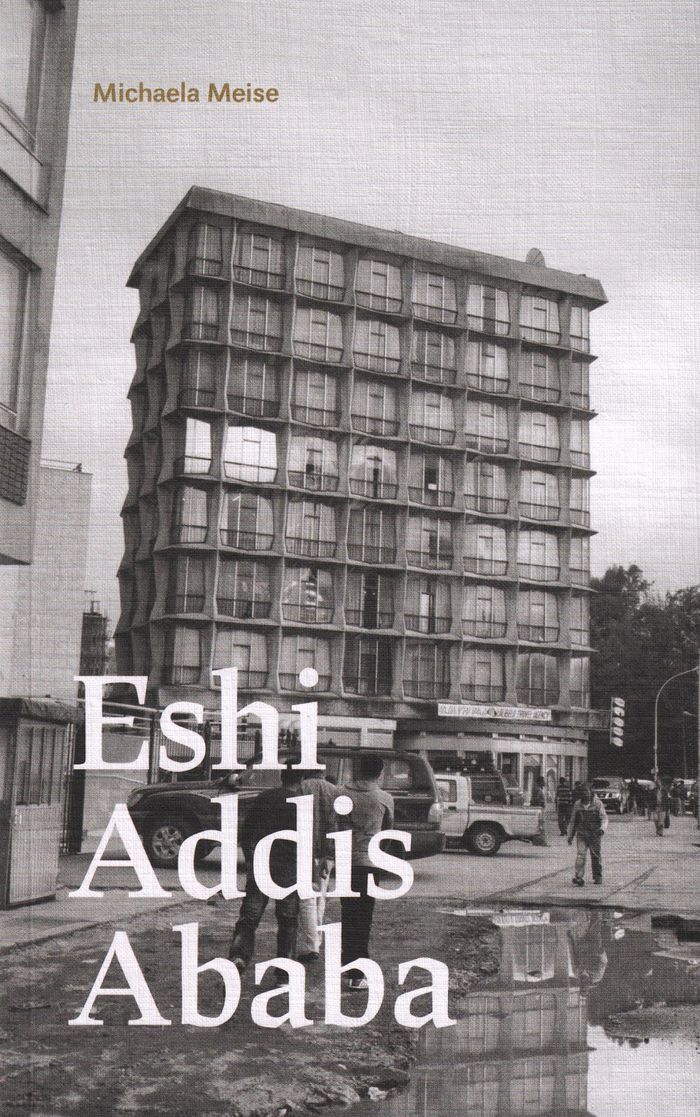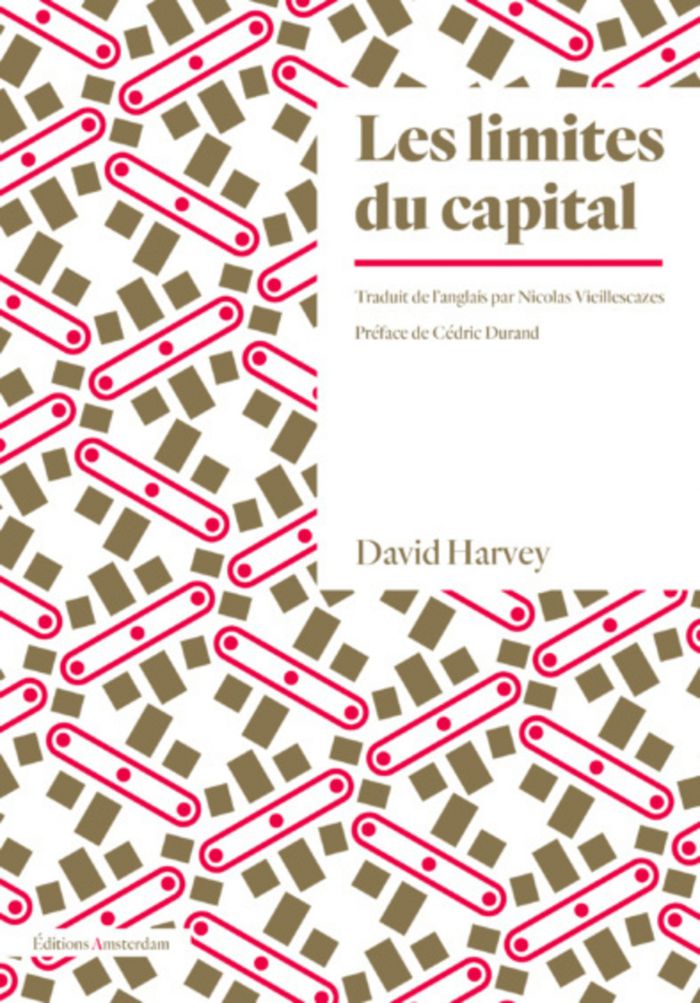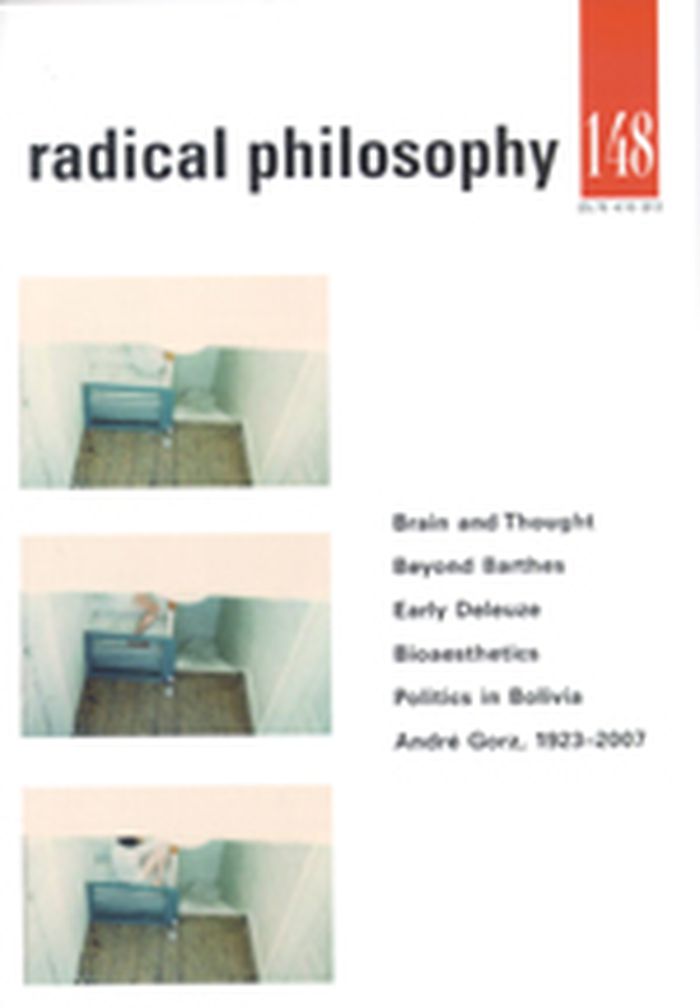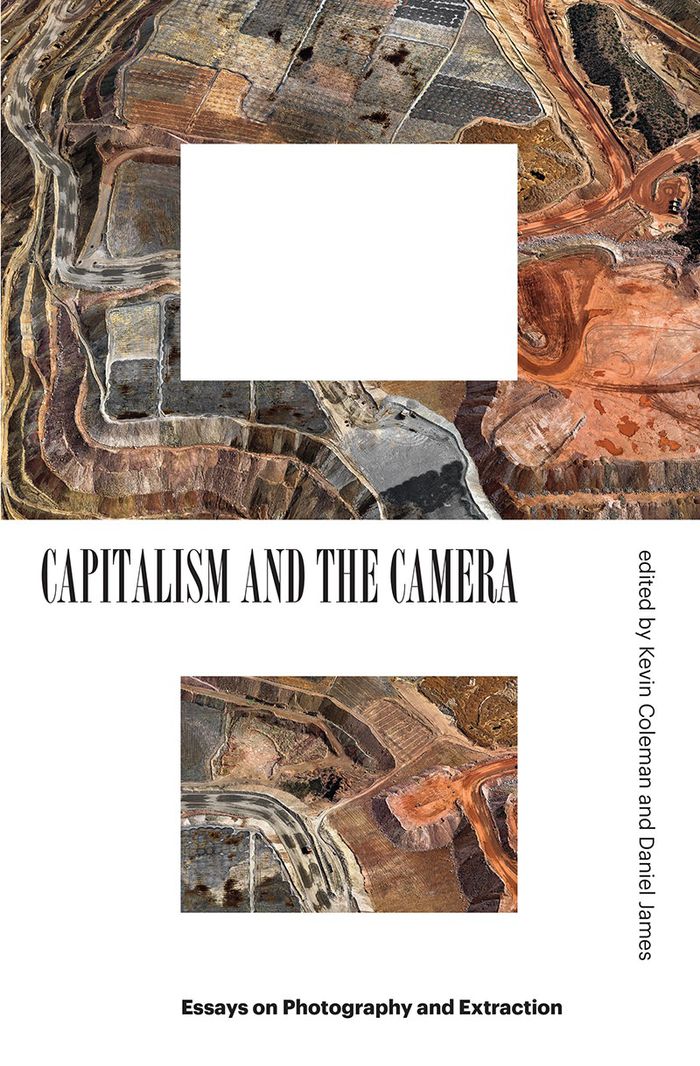113 Results
Form:
books
books
Actions:
Holdings:
Description:
x, 229 pages ; 22 cm
Description:
x, 229 pages ; 22 cm
Subject:
- Indigenous peoples North America Government relations.,
- Indigenous peoples North America Politics and government.,
- Indigenous peoples Canada Government relations.,
- Indigenous peoples Canada Politics and government.,
- Indigenous peoples Legal status, laws, etc. Canada.,
- Indians of North America Canada Government relations.,
- Indians of North America Canada Politics and government.,
- Indians of North America Legal status, laws, etc. Canada.,
- Indians, Treatment of Canada.,
- Indians Legal status, laws, etc. Canada.,
- First Nations Government relations.,
- First Nations Politics and government.,
- First Nations Legal status, laws, etc.,
- First Nations, Treatment of.,
- Autochtones Amérique du Nord Relations avec l'État.,
- Autochtones Amérique du Nord Politique et gouvernement.,
- Peuples autochtones Canada Relations avec l'État.,
- Peuples autochtones Canada Politique et gouvernement.,
- Peuples autochtones Droit Canada.,
- Premières Nations Relations avec l'État.,
- Premières Nations Politique et gouvernement.,
- Attitudes envers les Peuples autochtones Canada.,
- Indigenous peoples Politics and government,
- Indigenous peoples Legal status, laws, etc.,
- Indigenous peoples Government relations,
- Indians, Treatment of,
- Indians of North America Politics and government,
- Indians of North America Legal status, laws, etc.,
- Indians of North America Government relations,
- Ethnic relations Political aspects,
- Indianerpolitik,
- Rechtsstellung,
- Indianer,
- Selbstbestimmungsrecht,
- North America.,
- Canada.,
- Indians.,
- Politics.,
- Government.,
- Legal status.,
- Ethnicity.,
- Self-determination.,
- Nordamerikas indianer politiska aspekter.,
- Canada Ethnic relations Political aspects.,
- Kanada.,
- Canada Relations interethniques Aspect politique.,
- First Nations First peoples Native Americans
(See more)
Publication:
Minneapolis, MN : University of Minnesota Press, [2014], ©2014
Minneapolis, MN : University of Minnesota Press, [2014], ©2014
Title:
Red skin, white masks : rejecting the colonial politics of recognition / Glen Sean Coulthard ; foreword by Taiaiake Alfred.
Actions:
Holdings:
Description:
x, 229 pages ; 22 cm
Red skin, white masks : rejecting the colonial politics of recognition / Glen Sean Coulthard ; foreword by Taiaiake Alfred.
Actions:
Holdings:
Description:
x, 229 pages ; 22 cm
Form:
books
books
Publication:
Minneapolis, MN : University of Minnesota Press, [2014], ©2014
Minneapolis, MN : University of Minnesota Press, [2014], ©2014
Subject:
- Indigenous peoples North America Government relations.,
- Indigenous peoples North America Politics and government.,
- Indigenous peoples Canada Government relations.,
- Indigenous peoples Canada Politics and government.,
- Indigenous peoples Legal status, laws, etc. Canada.,
- Indians of North America Canada Government relations.,
- Indians of North America Canada Politics and government.,
- Indians of North America Legal status, laws, etc. Canada.,
- Indians, Treatment of Canada.,
- Indians Legal status, laws, etc. Canada.,
- First Nations Government relations.,
- First Nations Politics and government.,
- First Nations Legal status, laws, etc.,
- First Nations, Treatment of.,
- Autochtones Amérique du Nord Relations avec l'État.,
- Autochtones Amérique du Nord Politique et gouvernement.,
- Peuples autochtones Canada Relations avec l'État.,
- Peuples autochtones Canada Politique et gouvernement.,
- Peuples autochtones Droit Canada.,
- Premières Nations Relations avec l'État.,
- Premières Nations Politique et gouvernement.,
- Attitudes envers les Peuples autochtones Canada.,
- Indigenous peoples Politics and government,
- Indigenous peoples Legal status, laws, etc.,
- Indigenous peoples Government relations,
- Indians, Treatment of,
- Indians of North America Politics and government,
- Indians of North America Legal status, laws, etc.,
- Indians of North America Government relations,
- Ethnic relations Political aspects,
- Indianerpolitik,
- Rechtsstellung,
- Indianer,
- Selbstbestimmungsrecht,
- North America.,
- Canada.,
- Indians.,
- Politics.,
- Government.,
- Legal status.,
- Ethnicity.,
- Self-determination.,
- Nordamerikas indianer politiska aspekter.,
- Canada Ethnic relations Political aspects.,
- Kanada.,
- Canada Relations interethniques Aspect politique.,
- First Nations First peoples Native Americans
(See more)
Actions:
Price:
$45.00
(available to order)
Summary:
Eshi Addis Ababa, by German artist Michaela Meise (born 1976), is a kind of architectural guide through Addis Ababa, capital of Ethiopia. One emphasis is its relationship to East Germany, with pictures of the former East German ambassador’s villa and the Karl Marx memorial created by Jo Jastram and Peter Baumbach.
$45.00
(available to order)
Summary:
Eshi Addis Ababa, by German artist Michaela Meise (born 1976), is a kind of architectural guide through Addis Ababa, capital of Ethiopia. One emphasis is its relationship to East Germany, with pictures of the former East German ambassador’s villa and the Karl Marx memorial created by Jo Jastram and Peter Baumbach.
Title:
Michaela Meise: Eshi Addis Ababa
Actions:
Price:
$45.00
(available to order)
Summary:
Eshi Addis Ababa, by German artist Michaela Meise (born 1976), is a kind of architectural guide through Addis Ababa, capital of Ethiopia. One emphasis is its relationship to East Germany, with pictures of the former East German ambassador’s villa and the Karl Marx memorial created by Jo Jastram and Peter Baumbach.
Michaela Meise: Eshi Addis Ababa
Actions:
Price:
$45.00
(available to order)
Summary:
Eshi Addis Ababa, by German artist Michaela Meise (born 1976), is a kind of architectural guide through Addis Ababa, capital of Ethiopia. One emphasis is its relationship to East Germany, with pictures of the former East German ambassador’s villa and the Karl Marx memorial created by Jo Jastram and Peter Baumbach.
Subject:
Contemporary Art Monographs
Contemporary Art Monographs
Title:
Les limites du capital
Les limites du capital
Actions:
Price:
$52.95
(available in store)
Summary:
Produit d'une dizaine d'années de recherches et de réflexions de l'auteur, géographe, cet ouvrage propose une reconstruction historico-géographique de l'analyse du capitalisme développée par Karl Marx. Selon lui, le capitalisme est un système socio-économique qui se développe et résout ses crises d'accumulation en créant et en détruisant des territoires.
$52.95
(available in store)
Summary:
Produit d'une dizaine d'années de recherches et de réflexions de l'auteur, géographe, cet ouvrage propose une reconstruction historico-géographique de l'analyse du capitalisme développée par Karl Marx. Selon lui, le capitalisme est un système socio-économique qui se développe et résout ses crises d'accumulation en créant et en détruisant des territoires.
Title:
Les limites du capital
Actions:
Price:
$52.95
(available in store)
Summary:
Produit d'une dizaine d'années de recherches et de réflexions de l'auteur, géographe, cet ouvrage propose une reconstruction historico-géographique de l'analyse du capitalisme développée par Karl Marx. Selon lui, le capitalisme est un système socio-économique qui se développe et résout ses crises d'accumulation en créant et en détruisant des territoires.
Les limites du capital
Actions:
Price:
$52.95
(available in store)
Summary:
Produit d'une dizaine d'années de recherches et de réflexions de l'auteur, géographe, cet ouvrage propose une reconstruction historico-géographique de l'analyse du capitalisme développée par Karl Marx. Selon lui, le capitalisme est un système socio-économique qui se développe et résout ses crises d'accumulation en créant et en détruisant des territoires.
Subject:
Critical Theory
Critical Theory
Actions:
Price:
$55.00
(available to order)
Summary:
Despite the famous pedagogical philosophy and teachers of the Bauhaus, the school's students have never received their due recognition. This historic publication includes works by Theo Balden, Eugen Batz, Max Bill, Marianne Brandt, Werner Drewes, Werner Gilles, Werner Graeff, Carl Marx, Erich Mende, Karl Peter Rohl, Wera Meyer-Waldeck and Fritz Winter.
$55.00
(available to order)
Summary:
Despite the famous pedagogical philosophy and teachers of the Bauhaus, the school's students have never received their due recognition. This historic publication includes works by Theo Balden, Eugen Batz, Max Bill, Marianne Brandt, Werner Drewes, Werner Gilles, Werner Graeff, Carl Marx, Erich Mende, Karl Peter Rohl, Wera Meyer-Waldeck and Fritz Winter.
Publication:
February 2014
February 2014
Title:
Bauhaus: the art of the students
Actions:
Price:
$55.00
(available to order)
Summary:
Despite the famous pedagogical philosophy and teachers of the Bauhaus, the school's students have never received their due recognition. This historic publication includes works by Theo Balden, Eugen Batz, Max Bill, Marianne Brandt, Werner Drewes, Werner Gilles, Werner Graeff, Carl Marx, Erich Mende, Karl Peter Rohl, Wera Meyer-Waldeck and Fritz Winter.
Bauhaus: the art of the students
Actions:
Price:
$55.00
(available to order)
Summary:
Despite the famous pedagogical philosophy and teachers of the Bauhaus, the school's students have never received their due recognition. This historic publication includes works by Theo Balden, Eugen Batz, Max Bill, Marianne Brandt, Werner Drewes, Werner Gilles, Werner Graeff, Carl Marx, Erich Mende, Karl Peter Rohl, Wera Meyer-Waldeck and Fritz Winter.
Form:
books
books
Actions:
Holdings:
Description:
231 pages : illustrations (chiefly color) ; 29 cm
Description:
231 pages : illustrations (chiefly color) ; 29 cm
Author:
- Jäger-Klein, Caroline.,
- Helmut Moser -- Karin Schwarz-Viechtbauer -- Caroline Jäger-Klein -- Peter Dietl, Wolfgang Souczek -- Caroline Jäger-Klein -- Sabine Plakolm-Forsthuber -- Sabine Plakolm-Forsthuber -- Marie Rezac -- Iva Kovacic -- Thomas Hrabal -- Brigitte Rabl, Karin Schwarz-Viechtbauer -- Christian Kühn -- Franz Hammerer -- Christian Kühn, Brigitte Rabl, Karin Schwarz-Viechtbauer -- Franz Hammerer, Elfriede Heinrich, Thomas Koch, Christian Kühn, Brigitte Rabl, Karin Schwarz-Viechtbauer -- Karin Schwarz-Viechtbauer -- Doris Damyanovic, Magdalena Uedl-Kerschbaumer, Angela Weikmann -- Günther Franz Pfaffenwimmer -- Christian Halbwachs, Margarethe Tschannett -- Jutta Kleedorfer, Heide Studer -- Doris Damyanovic, Alice Größinger, Angela Weikmann -- Martina Strobl, Vesna Urlicic -- Markus Kumpfmüller, Paula Polak -- Christian Winkler -- Brigitte Rabl, Alexander Schütz -- Magdalena Uedl-Kerschbaumer -- Alice Größinger, Paula Polak, Martina Strobl, Vesna Urlicic, Jutta Kleedorfer -- Hanno Schlögl -- Gernot Kulterer -- Leitner Pretterhofer Simbeni Architekten -- Treusch architecture -- Henke und schreieck Architekten -- Atelier4 architects -- Hübner Architekten -- Brunner & Sallmann -- Jürgen Koene, Arno Renelt -- Dietrich, Untertrifaller Architekten -- Cukrowicz Nachbaur Architekten -- ZT-Arguitectos -- K+P Architekten und Stadtplaner -- Fasch & fuchs.architekten -- One room georg huber, karl meinhart -- Peter Schwinde Architekt -- Bramberger, architects -- Dietmar Feichtinger Architects -- Marte. Marte Architekten -- Kaufmann.wanas architekten -- AMP Architekten -- Atelier Heiss Architekten -- Shibukawa Eder Architects --,
- Plakolm-Forsthuber, Sabine, 1959-,
- Österreichisches Institut für Schul- und Sportstättenbau.
(See more)
Subject:
- School buildings Austria.,
- School buildings Austria Designs and plans.,
- Architecture Austria 20th century.,
- Architecture Austria 21st century.,
- Constructions scolaires Autriche.,
- Constructions scolaires Autriche Dessins et plans.,
- Architecture Autriche 20e siècle.,
- Architecture Autriche 21e siècle.,
- Architecture,
- School buildings,
- Austria,
- Architectural drawings
(See more)
Publication:
Wien : NWV, Neuer Wissenschaftlicher Verlag, 2012.
Wien : NWV, Neuer Wissenschaftlicher Verlag, 2012.
Title:
Schulbau in Österreich 1996-2011 : Wege in die Zukunft / Caroline Jäger-Klein, Sabine Plakolm-Forsthuber ; Herausgeber: Österreichisches Institut für Schul- und Sportstättenbau im Auftrag des Bundesministeriums für Unterricht, Kunst und Kultur.
Actions:
Holdings:
Description:
231 pages : illustrations (chiefly color) ; 29 cm
Schulbau in Österreich 1996-2011 : Wege in die Zukunft / Caroline Jäger-Klein, Sabine Plakolm-Forsthuber ; Herausgeber: Österreichisches Institut für Schul- und Sportstättenbau im Auftrag des Bundesministeriums für Unterricht, Kunst und Kultur.
Actions:
Holdings:
Description:
231 pages : illustrations (chiefly color) ; 29 cm
Form:
books
books
Publication:
Wien : NWV, Neuer Wissenschaftlicher Verlag, 2012.
Wien : NWV, Neuer Wissenschaftlicher Verlag, 2012.
Author:
- Jäger-Klein, Caroline.,
- Helmut Moser -- Karin Schwarz-Viechtbauer -- Caroline Jäger-Klein -- Peter Dietl, Wolfgang Souczek -- Caroline Jäger-Klein -- Sabine Plakolm-Forsthuber -- Sabine Plakolm-Forsthuber -- Marie Rezac -- Iva Kovacic -- Thomas Hrabal -- Brigitte Rabl, Karin Schwarz-Viechtbauer -- Christian Kühn -- Franz Hammerer -- Christian Kühn, Brigitte Rabl, Karin Schwarz-Viechtbauer -- Franz Hammerer, Elfriede Heinrich, Thomas Koch, Christian Kühn, Brigitte Rabl, Karin Schwarz-Viechtbauer -- Karin Schwarz-Viechtbauer -- Doris Damyanovic, Magdalena Uedl-Kerschbaumer, Angela Weikmann -- Günther Franz Pfaffenwimmer -- Christian Halbwachs, Margarethe Tschannett -- Jutta Kleedorfer, Heide Studer -- Doris Damyanovic, Alice Größinger, Angela Weikmann -- Martina Strobl, Vesna Urlicic -- Markus Kumpfmüller, Paula Polak -- Christian Winkler -- Brigitte Rabl, Alexander Schütz -- Magdalena Uedl-Kerschbaumer -- Alice Größinger, Paula Polak, Martina Strobl, Vesna Urlicic, Jutta Kleedorfer -- Hanno Schlögl -- Gernot Kulterer -- Leitner Pretterhofer Simbeni Architekten -- Treusch architecture -- Henke und schreieck Architekten -- Atelier4 architects -- Hübner Architekten -- Brunner & Sallmann -- Jürgen Koene, Arno Renelt -- Dietrich, Untertrifaller Architekten -- Cukrowicz Nachbaur Architekten -- ZT-Arguitectos -- K+P Architekten und Stadtplaner -- Fasch & fuchs.architekten -- One room georg huber, karl meinhart -- Peter Schwinde Architekt -- Bramberger, architects -- Dietmar Feichtinger Architects -- Marte. Marte Architekten -- Kaufmann.wanas architekten -- AMP Architekten -- Atelier Heiss Architekten -- Shibukawa Eder Architects --,
- Plakolm-Forsthuber, Sabine, 1959-,
- Österreichisches Institut für Schul- und Sportstättenbau.
(See more)
Subject:
- School buildings Austria.,
- School buildings Austria Designs and plans.,
- Architecture Austria 20th century.,
- Architecture Austria 21st century.,
- Constructions scolaires Autriche.,
- Constructions scolaires Autriche Dessins et plans.,
- Architecture Autriche 20e siècle.,
- Architecture Autriche 21e siècle.,
- Architecture,
- School buildings,
- Austria,
- Architectural drawings
(See more)
Form:
books
books
Actions:
Price:
$18.95
(available to order)
Summary:
L'auteur Bill Bryson entreprend un Grand Tour à l'échelle d'une maison pour raconter de pièce en pièce l'aventure du génie humain. Au fil de cette histoire de l'envers du décor, vous croiserez des personnages tels que Virginia Woolf (qui n'aimait pas sa bonne) et Karl Marx (qui couchqit avec la sienne), vous saurez tout sur l'invention de la tapette à souris et vous(...)
$18.95
(available to order)
Summary:
L'auteur Bill Bryson entreprend un Grand Tour à l'échelle d'une maison pour raconter de pièce en pièce l'aventure du génie humain. Au fil de cette histoire de l'envers du décor, vous croiserez des personnages tels que Virginia Woolf (qui n'aimait pas sa bonne) et Karl Marx (qui couchqit avec la sienne), vous saurez tout sur l'invention de la tapette à souris et vous(...)
Title:
Une histoire du monde sans sortir de chez moi
Actions:
Price:
$18.95
(available to order)
Summary:
L'auteur Bill Bryson entreprend un Grand Tour à l'échelle d'une maison pour raconter de pièce en pièce l'aventure du génie humain. Au fil de cette histoire de l'envers du décor, vous croiserez des personnages tels que Virginia Woolf (qui n'aimait pas sa bonne) et Karl Marx (qui couchqit avec la sienne), vous saurez tout sur l'invention de la tapette à souris et vous comprendrez que sans les "water-closets à chasse d'eau" il n'y aurait pas eu de révolution industrielle...
Une histoire du monde sans sortir de chez moi
Actions:
Price:
$18.95
(available to order)
Summary:
L'auteur Bill Bryson entreprend un Grand Tour à l'échelle d'une maison pour raconter de pièce en pièce l'aventure du génie humain. Au fil de cette histoire de l'envers du décor, vous croiserez des personnages tels que Virginia Woolf (qui n'aimait pas sa bonne) et Karl Marx (qui couchqit avec la sienne), vous saurez tout sur l'invention de la tapette à souris et vous comprendrez que sans les "water-closets à chasse d'eau" il n'y aurait pas eu de révolution industrielle...
Form:
books
books
Publication:
July 2015
July 2015
Subject:
Architectural Theory
Architectural Theory
Title:
Radical Philosophy 148
Radical Philosophy 148
Actions:
Price:
$13.00
(available to order)
Summary:
Commentaries: Looking back on May '68 Articles: Art and Immaterial Labour Maurizio Lazzarato: Art, Work and Politics in Societies of Security Judith Revel: Against Idealism and New Vitalisms Franco Berardi/Bifo: Conjunction/Connection Antonio Negri: Concerning Periodization in Art Review: Knox Peden on Bourg's May 1968 and Contemporary French Thought Peter(...)
$13.00
(available to order)
Summary:
Commentaries: Looking back on May '68 Articles: Art and Immaterial Labour Maurizio Lazzarato: Art, Work and Politics in Societies of Security Judith Revel: Against Idealism and New Vitalisms Franco Berardi/Bifo: Conjunction/Connection Antonio Negri: Concerning Periodization in Art Review: Knox Peden on Bourg's May 1968 and Contemporary French Thought Peter(...)
Title:
Radical Philosophy 148
Actions:
Price:
$13.00
(available to order)
Summary:
Commentaries: Looking back on May '68 Articles: Art and Immaterial Labour Maurizio Lazzarato: Art, Work and Politics in Societies of Security Judith Revel: Against Idealism and New Vitalisms Franco Berardi/Bifo: Conjunction/Connection Antonio Negri: Concerning Periodization in Art Review: Knox Peden on Bourg's May 1968 and Contemporary French Thought Peter hallward on Alain Badiou on Sarkozy Gail Day on Marxism and the History of Art Steve Edwards on John Roberts's The Intangibilities of Form Andrew Chitty on David Leopold's The young Karl Marx Fabian Säfer on Re-politicising the Kyoto School as Philosophy
Radical Philosophy 148
Actions:
Price:
$13.00
(available to order)
Summary:
Commentaries: Looking back on May '68 Articles: Art and Immaterial Labour Maurizio Lazzarato: Art, Work and Politics in Societies of Security Judith Revel: Against Idealism and New Vitalisms Franco Berardi/Bifo: Conjunction/Connection Antonio Negri: Concerning Periodization in Art Review: Knox Peden on Bourg's May 1968 and Contemporary French Thought Peter hallward on Alain Badiou on Sarkozy Gail Day on Marxism and the History of Art Steve Edwards on John Roberts's The Intangibilities of Form Andrew Chitty on David Leopold's The young Karl Marx Fabian Säfer on Re-politicising the Kyoto School as Philosophy
Subject:
Magazines
Magazines
Form:
books
books
Actions:
Holdings:
Description:
537 pages : illustrations, plans ; 25 cm
Description:
537 pages : illustrations, plans ; 25 cm
Author:
- Roberto Gargiani -- Jean-Pierre Adam -- Pierre Gros -- Giovanni di Pasquale -- Giangiacomo Martines -- Jacques Heyman -- Papa Cassinello -- Philippe Plagnieux -- Emanuala Montelli -- Gianluca Belli -- Roberto Gargiani -- Jean-Marie Pérouse de Montclos -- Roberto Gargiani -- Arianna Bosio -- Roberto Gargiani -- Antonio Becchi -- Maria Losito -- Roberto Gargiani -- Patricia Radelet-de Grave -- Antonio Becchi -- Raya Hauri -- Gianluca Belli -- Bertrand Lemoine -- Arianna Bosio -- Carol Gaye -- Maria Chiara Barone -- John McKean -- Pierre Pinon -- Giulia Chemolli -- Giovanni Fanelli -- Carles Buxadé Ribot -- Damjan Prelovšek -- Karl-Eugen Kurrer -- Philippe Mivelaz -- Leo Schubert -- Anna Rosellini -- Jack Quinan -- Joseph M. Siry -- Sergio Poretti -- Jean-Pierre Cêtre -- Marco Pogacnik -- Bruno Reichlin -- Mario Ciammitti -- Paolo Amaldi -- Fernando Ramos -- Nicholas Adams with Nicola McElroy -- Léon Krier -- Bruno Marchand -- Jaques Lucan.,
- Gargiani, Roberto, 1956-
(See more)
Subject:
Publication:
Lausanne : Presses polytechniques universitaires romandes, 2008.
Lausanne : Presses polytechniques universitaires romandes, 2008.
Title:
La colonne : nouvelle histoire de la construction / sous la direction de Roberto Gargiani.
Actions:
Holdings:
Description:
537 pages : illustrations, plans ; 25 cm
La colonne : nouvelle histoire de la construction / sous la direction de Roberto Gargiani.
Actions:
Holdings:
Description:
537 pages : illustrations, plans ; 25 cm
Form:
books
books
Publication:
Lausanne : Presses polytechniques universitaires romandes, 2008.
Lausanne : Presses polytechniques universitaires romandes, 2008.
Author:
- Roberto Gargiani -- Jean-Pierre Adam -- Pierre Gros -- Giovanni di Pasquale -- Giangiacomo Martines -- Jacques Heyman -- Papa Cassinello -- Philippe Plagnieux -- Emanuala Montelli -- Gianluca Belli -- Roberto Gargiani -- Jean-Marie Pérouse de Montclos -- Roberto Gargiani -- Arianna Bosio -- Roberto Gargiani -- Antonio Becchi -- Maria Losito -- Roberto Gargiani -- Patricia Radelet-de Grave -- Antonio Becchi -- Raya Hauri -- Gianluca Belli -- Bertrand Lemoine -- Arianna Bosio -- Carol Gaye -- Maria Chiara Barone -- John McKean -- Pierre Pinon -- Giulia Chemolli -- Giovanni Fanelli -- Carles Buxadé Ribot -- Damjan Prelovšek -- Karl-Eugen Kurrer -- Philippe Mivelaz -- Leo Schubert -- Anna Rosellini -- Jack Quinan -- Joseph M. Siry -- Sergio Poretti -- Jean-Pierre Cêtre -- Marco Pogacnik -- Bruno Reichlin -- Mario Ciammitti -- Paolo Amaldi -- Fernando Ramos -- Nicholas Adams with Nicola McElroy -- Léon Krier -- Bruno Marchand -- Jaques Lucan.,
- Gargiani, Roberto, 1956-
(See more)
Form:
books
books
Actions:
Holdings:
Description:
309 pages, 10 unnumbered pages of plates : illustrations (some color) ; 25 cm
Description:
309 pages, 10 unnumbered pages of plates : illustrations (some color) ; 25 cm
Author:
- Cabin fever (Vancouver, B.C.),
- Marc-Antoine Laugier -- Karl Ove Knausgaard -- Jean-Luc Pilon -- C. A. Weslager -- Jennifer M. Volland -- Caroline M. Kirkland -- Dawn E. Keetley -- Alexis de Tocqueville -- Mark Twain -- W. E. B. Du Bois -- Stephanie Rebick -- Dianne Newell -- Marie Bolton and Nancy C. Unger -- Jennifer M. Volland -- Gary Snyder -- Jack Kerouac -- Edward Abbey -- Jennifer M. Volland -- Helen A. Burns -- Photographs by Richard Johnson -- Henry David Thoreau -- Jathryn Schulz -- Herbert Maier and A. H. Good -- Stephanie Rebick -- Michael Prokopow -- Anyssa Neumann -- Photographs by Julius Shulman -- David Hill -- Chad Randl -- Peter Rabbit -- Simon Sadler -- Stephanie Rebick -- Scott Watson -- Jennifer M. Volland -- Margaret Atwood -- Annie Dillard -- Allen Ginsberg -- Anne LaBastille -- Diana Saverin -- Mark Wigley -- Matthew Grant -- Finn Arne Jørgensen -- Steven Seidman -- Erin Cho -- Jennifer M. Volland -- Zach Klein -- Stephanie Rebick -- Akiva Blander -- Jennifer M. Volland -- Michael Pollan -- Allison Geller -- Stephanie Rebick -- Jennifer M. Volland -- Monica Kim -- Jennifer M. Volland -- Stephanie Rebick --,
- Volland, Jennifer M., 1970-,
- Grenville, Bruce,,
- Rebick, Stephanie,,
- Barnett, Derek,,
- Vancouver Art Gallery,
(See more)
Subject:
- Hütte,
- Log cabins Canada History Exhibitions.,
- Dwellings Canada History Exhibitions.,
- Dwellings United States History Exhibitions.,
- Dwellings Social aspects Canada History Exhibitions.,
- Dwellings Social aspects United States History Exhibitions.,
- Dwellings Canada History Pictorial works Exhibitions.,
- Dwellings United States History Pictorial works Exhibitions.,
- Cabanes en bois rond Canada Histoire Expositions.,
- Habitations Canada Histoire Expositions.,
- Habitations États-Unis Histoire Expositions.,
- Habitations Aspect social Canada Histoire Expositions.,
- Habitations Aspect social États-Unis Histoire Expositions.,
- Habitations Canada Histoire Ouvrages illustrés Expositions.,
- Habitations États-Unis Histoire Ouvrages illustrés Expositions.,
- Log cabins.,
- Dwellings.,
- Dwellings Social aspects.,
- Canada.,
- United States.,
- USA,
- Exhibition publications.,
- exhibition catalogs.,
- Exhibition catalogs.,
- Exhibition, pictorial works.,
- History.,
- Catalogues d'exposition.
(See more)
Publication:
Vancouver, BC : Vancouver Art Gallery : Information Office, [2018], ©2018
Vancouver, BC : Vancouver Art Gallery : Information Office, [2018], ©2018
Title:
Cabin fever / editors: Jennifer M. Volland, Bruce Grenville and Stephanie Rebick.
Actions:
Holdings:
Description:
309 pages, 10 unnumbered pages of plates : illustrations (some color) ; 25 cm
Cabin fever / editors: Jennifer M. Volland, Bruce Grenville and Stephanie Rebick.
Actions:
Holdings:
Description:
309 pages, 10 unnumbered pages of plates : illustrations (some color) ; 25 cm
Form:
books
books
Publication:
Vancouver, BC : Vancouver Art Gallery : Information Office, [2018], ©2018
Vancouver, BC : Vancouver Art Gallery : Information Office, [2018], ©2018
Author:
- Cabin fever (Vancouver, B.C.),
- Marc-Antoine Laugier -- Karl Ove Knausgaard -- Jean-Luc Pilon -- C. A. Weslager -- Jennifer M. Volland -- Caroline M. Kirkland -- Dawn E. Keetley -- Alexis de Tocqueville -- Mark Twain -- W. E. B. Du Bois -- Stephanie Rebick -- Dianne Newell -- Marie Bolton and Nancy C. Unger -- Jennifer M. Volland -- Gary Snyder -- Jack Kerouac -- Edward Abbey -- Jennifer M. Volland -- Helen A. Burns -- Photographs by Richard Johnson -- Henry David Thoreau -- Jathryn Schulz -- Herbert Maier and A. H. Good -- Stephanie Rebick -- Michael Prokopow -- Anyssa Neumann -- Photographs by Julius Shulman -- David Hill -- Chad Randl -- Peter Rabbit -- Simon Sadler -- Stephanie Rebick -- Scott Watson -- Jennifer M. Volland -- Margaret Atwood -- Annie Dillard -- Allen Ginsberg -- Anne LaBastille -- Diana Saverin -- Mark Wigley -- Matthew Grant -- Finn Arne Jørgensen -- Steven Seidman -- Erin Cho -- Jennifer M. Volland -- Zach Klein -- Stephanie Rebick -- Akiva Blander -- Jennifer M. Volland -- Michael Pollan -- Allison Geller -- Stephanie Rebick -- Jennifer M. Volland -- Monica Kim -- Jennifer M. Volland -- Stephanie Rebick --,
- Volland, Jennifer M., 1970-,
- Grenville, Bruce,,
- Rebick, Stephanie,,
- Barnett, Derek,,
- Vancouver Art Gallery,
(See more)
Subject:
- Hütte,
- Log cabins Canada History Exhibitions.,
- Dwellings Canada History Exhibitions.,
- Dwellings United States History Exhibitions.,
- Dwellings Social aspects Canada History Exhibitions.,
- Dwellings Social aspects United States History Exhibitions.,
- Dwellings Canada History Pictorial works Exhibitions.,
- Dwellings United States History Pictorial works Exhibitions.,
- Cabanes en bois rond Canada Histoire Expositions.,
- Habitations Canada Histoire Expositions.,
- Habitations États-Unis Histoire Expositions.,
- Habitations Aspect social Canada Histoire Expositions.,
- Habitations Aspect social États-Unis Histoire Expositions.,
- Habitations Canada Histoire Ouvrages illustrés Expositions.,
- Habitations États-Unis Histoire Ouvrages illustrés Expositions.,
- Log cabins.,
- Dwellings.,
- Dwellings Social aspects.,
- Canada.,
- United States.,
- USA,
- Exhibition publications.,
- exhibition catalogs.,
- Exhibition catalogs.,
- Exhibition, pictorial works.,
- History.,
- Catalogues d'exposition.
(See more)
Price:
$39.95
(available to order)
Summary:
Photography was invented between the publication of Adam Smith’s ''The Wealth of Nations'' and Karl Marx and Friedrich Engels’s ''The Communist Manifesto.'' Taking the intertwined development of capitalism and the camera as their starting point, the essays collected here investigate the relationship between capitalist accumulation and the photographic image, and ask(...)
$39.95
(available to order)
Summary:
Photography was invented between the publication of Adam Smith’s ''The Wealth of Nations'' and Karl Marx and Friedrich Engels’s ''The Communist Manifesto.'' Taking the intertwined development of capitalism and the camera as their starting point, the essays collected here investigate the relationship between capitalist accumulation and the photographic image, and ask(...)
Title:
Capitalism and the camera: essays on photography and extraction
Actions:
Price:
$39.95
(available to order)
Summary:
Photography was invented between the publication of Adam Smith’s ''The Wealth of Nations'' and Karl Marx and Friedrich Engels’s ''The Communist Manifesto.'' Taking the intertwined development of capitalism and the camera as their starting point, the essays collected here investigate the relationship between capitalist accumulation and the photographic image, and ask whether photography might allow us to refuse capitalism’s violence—and if so, how? Drawn together in productive disagreement, the essays in this collection explore the relationship of photography to resource extraction and capital accumulation, from 1492 to the postcolonial; the camera’s potential to make visible critical understandings of capitalist production and society, especially economies of class and desire; and the ways the camera and the image can be used to build cultural and political counterpublics from which a democratic struggle against capitalism might emerge.
Capitalism and the camera: essays on photography and extraction
Actions:
Price:
$39.95
(available to order)
Summary:
Photography was invented between the publication of Adam Smith’s ''The Wealth of Nations'' and Karl Marx and Friedrich Engels’s ''The Communist Manifesto.'' Taking the intertwined development of capitalism and the camera as their starting point, the essays collected here investigate the relationship between capitalist accumulation and the photographic image, and ask whether photography might allow us to refuse capitalism’s violence—and if so, how? Drawn together in productive disagreement, the essays in this collection explore the relationship of photography to resource extraction and capital accumulation, from 1492 to the postcolonial; the camera’s potential to make visible critical understandings of capitalist production and society, especially economies of class and desire; and the ways the camera and the image can be used to build cultural and political counterpublics from which a democratic struggle against capitalism might emerge.
Subject:
Theory of Photography
Theory of Photography




